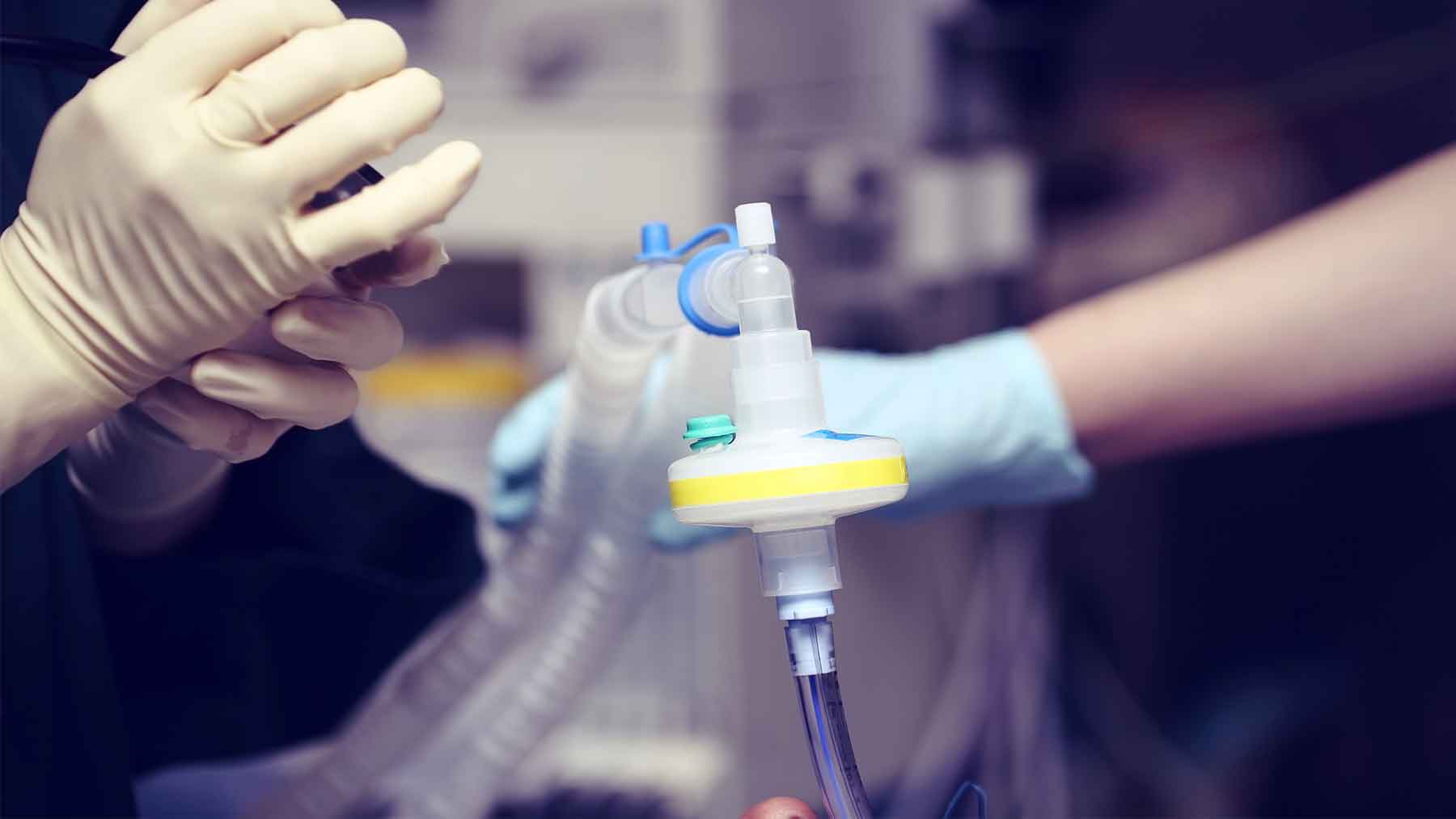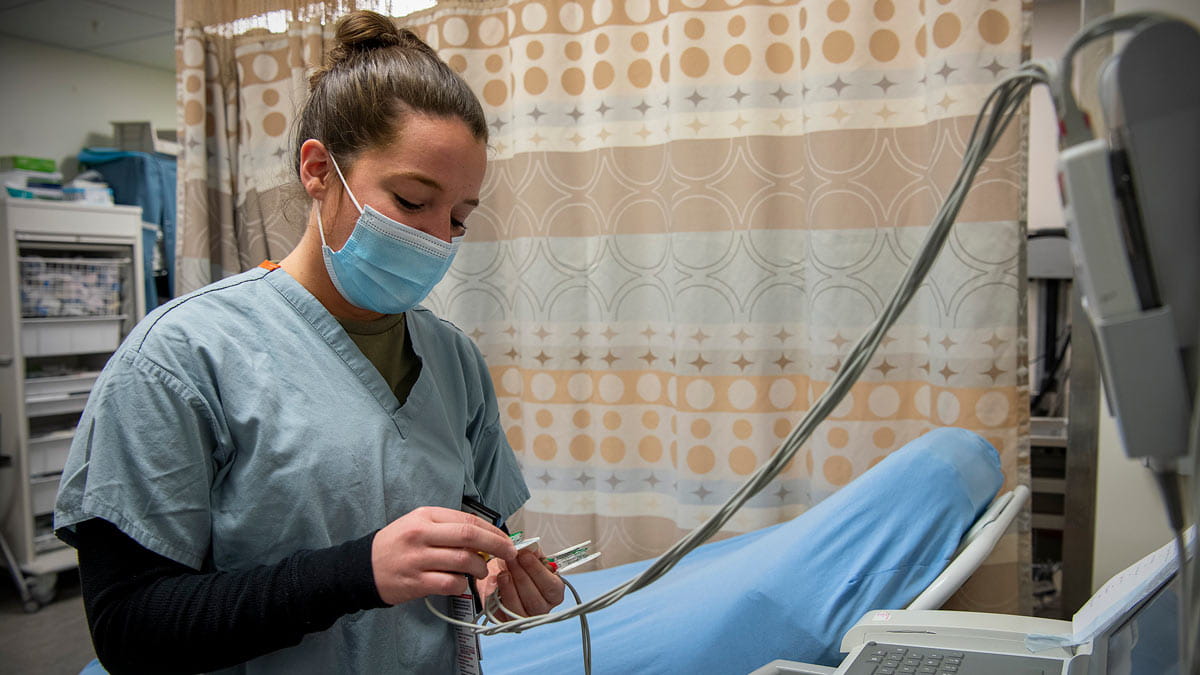A ventilator might save your life, but at what cost?

Editor’s note: As what we know about COVID-19 evolves, so could the information contained in this story. Find our most recent COVID-19 blog posts here, and learn the latest in COVID-19 prevention at the Centers for Disease Control and Prevention.
Ventilators are life-saving tools in the fight against COVID-19, but they can cause serious complications. You may have seen media reports of patients facing long recoveries and both mental and physical consequences after their time on these breathing machines.
As an anesthesiologist and intensivist (a physician who provides special care for very sick patients) who works in intensive care units across The Ohio State University Wexner Medical Center, I’ve seen the extraordinary value of ventilators—and I also know how important it is to use them carefully, and only when necessary.
Here are some of the questions I’ve been asked about how ventilators work, what long-term risks they pose and whether they do more harm than good.
What is it like to be placed on a ventilator? Is a patient aware of what’s happening?
You need a breathing tube so the ventilator can help you breathe. In order to place a breathing tube, you’ll be given medication to make you unconscious, like receiving anesthesia for surgery. Most likely you’ll neither be aware, nor remember this part. A hollow tube goes through your mouth and down into your windpipe. It’ll be taped or attached with a special device to your upper lip.
When you wake up, the breathing tube will be in your mouth and the ventilator will be helping you breathe. You’ll have a nurse and other members of the ICU team right there to make sure you’re safe. Everyone experiences this differently. Some people feel a gagging sensation from the breathing tube or a sensation of needing to cough from the ventilator helping them breathe. The team will make adjustments to make you as comfortable as possible. If you continue to feel like gagging or coughing, you’ll be given medicines to help you feel better.
Most often patients are sleepy but conscious while they are on the ventilator—think of when your alarm clock goes off but you aren’t yet fully awake. Science has taught us that if we can avoid strong sedation in the ICU, it’ll help you heal faster. The whole team will be focused on making sure you aren’t uncomfortable while you’re healing.
Those who are too sick or can’t get comfortable on the ventilator may need deeper sedation, like receiving anesthesia for surgery. Sometimes this gets referred to as a medically induced coma. Because of how sick COVID-19 can make your lungs, many more of our affected patients are needing this type of sedation, compared to our other ICU patients.
I’ve heard some people in the ICU get very confused. Why is this?
Unfortunately, when your body is very sick, your brain also gets sick. In the ICU, this often results in a condition we call delirium. When someone is delirious they can be clear-headed one moment and very confused the next. They have difficulty paying attention to things such as remembering not to pull out their IVs. They may not know where they are, or what’s happening. The only treatment for delirium is to fix what made the patient sick in the first place.
What do we do to minimize these effects and care for these patients long-term?
The best thing we can do is identify patients who are critically ill early, so we can marshal the appropriate resources to help them heal. In addition, our ICUs are set up to provide patients with natural light. All of our staff frequently re-orient our ICU patients to where they are and what’s happening. We minimize the types of sedation we know worsen the risk of delirium and are associated with longer-term negative outcomes.
What long-term mental health effects have been associated with patients who have been on ventilators?
We know that people who are sick enough to need care in the ICU can have long-term consequences. These include depression, anxiety and even post-traumatic stress disorder. Post Intensive Care Syndrome is an active area of research; the goal is to help us figure out what causes these problems and how we can decrease their risk. Ohio State is also in the process of developing a post-ICU clinic to follow patients after the ICU and connect them to any resources they may need.
Does the length of time a patient is on a ventilator matter? Do complications increase with time?
Generally speaking, the longer someone is critically ill, the more likely they are to have complications and the less likely they are to recover. But this isn’t true for everyone. Your overall health before you get sick has an effect on how well you recover from being sick.
For the ventilator in particular, we worry about two big complications: pneumonia—for example, with COVID-19 we worry that bacteria could cause a second pneumonia in addition to the virus—and weakness. The longer the breathing machine helps you breathe, the weaker your breathing muscles grow and the harder it is to recover.
Think of an astronaut returning to Earth. If they don’t have to fight against gravity to walk, their legs become weak. The same thing happens with your breathing muscles while on a ventilator.
Therefore, the entire ICU team does their very best to push people to liberate from the ventilator as soon as it’s safe to do so.
Are there ways patients can improve their outcomes and better cope once they get home?
We don’t have a lot of science to guide us here, but making sure to keep your follow-up medical appointments is likely to ensure your healing continues outside of the hospital. In addition, seeking out social connections (which can be extra challenging these days) for support, and feeling empowered to ask for help may help you cope during what can be a long recovery.
I’ve heard in the media that ventilators actually cause more harm than good in COVID-19. Is that true?
The ventilator can cause lung injury in a phenomenon called ventilator-associated lung injury (VALI), but this happens when the ventilator is being used in a way that’s unsafe (pushing in too much air or using too much pressure). While we’re learning every day about the best ways to take care of patients with COVID-19, we don’t put anyone on the ventilator who doesn’t absolutely need it, and the ventilator remains a life-saving tool in the fight against COVID-19.
This also highlights how important it is to have a team of critical care experts taking care of these patients. In the Department of Anesthesiology, we’ve started an educational initiative called Rapid ICU Training to provide accessible and up-to-date critical care best practices for advanced practice providers, residents/fellows and physicians who may not typically care for critically ill patients but who are asked to do so in this time of need.
In addition, six members of our anesthesiology critical care faculty are actively volunteering for a hotline sponsored by the American Society of Anesthesiologists and the Anesthesia Patient Safety Foundation to be available to provide critical care education for providers caring for critically ill patients.
David Stahl is an intensivist and anesthesiologist at The Ohio State University Wexner Medical Center, as well as the program director of the Anesthesiology Residency Program and an instructor in the College of Medicine.




